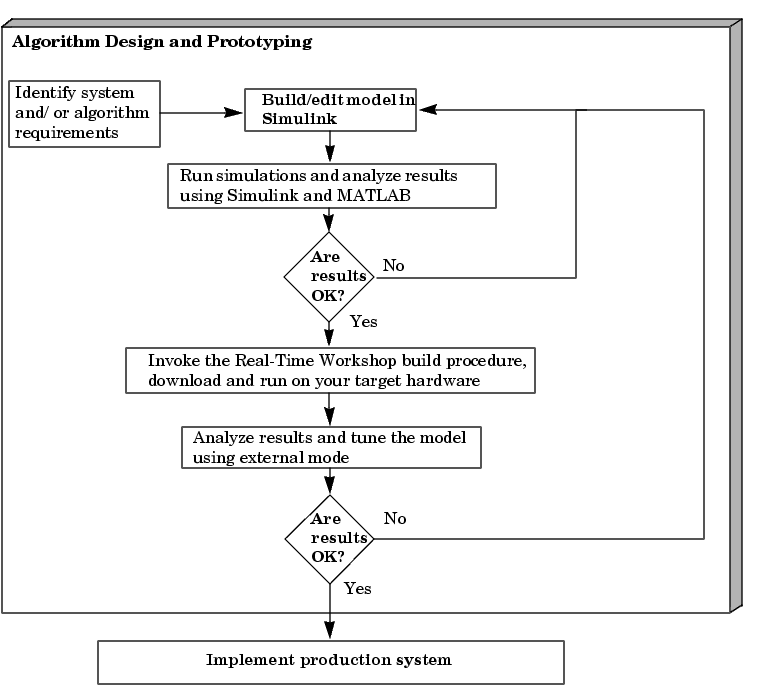

| Real-Time Workshop User's Guide |   |
Key Aspects of Rapid Prototyping
Figure 2-1 contrasts the rapid prototyping development process with the traditional development process.
Figure 2-1: Traditional vs. Rapid Prototyping Development Processes
The traditional approach to real-time design and implementation typically involves multiple teams of engineers, including an algorithm design team, software design team, hardware design team, and an implementation team. When the algorithm design team has completed its specifications, the software design team implements the algorithm in a simulation environment and then specifies the hardware requirements. The hardware design team then creates the production hardware. Finally, the implementation team integrates the hardware into the larger overall system.
This traditional development process can be lengthy, because the algorithm design engineers do not work with the actual hardware. The rapid prototyping process combines the algorithm, software, and hardware design phases, eliminating potential bottlenecks. The process allows engineers to see the results and rapidly iterate on the design before expensive hardware is developed.
The key to rapid prototyping is automatic program building. Automatic program building puts algorithm development (including coding, compiling, linking, and downloading to target hardware) under control of a single process. Automatic program building allows you to make design changes directly to the block diagram.
You begin the rapid prototyping process with the development of a model in Simulink. In control engineering, you model plant dynamics and other dynamic components that constitute a controller and/or an observer. In digital signal processing, your model typically explores input signal characteristics, such as the signal-to-noise ratio.
You then simulate your model in Simulink. You use MATLAB, Simulink, and toolboxes to aid in the development of algorithms and analysis of the results. If the results are not satisfactory, you can iterate the modeling/analysis process until results are acceptable.
Once you have achieved the desired results, you use the Real-Time Workshop to generate downloadable C code that implements the appropriate portions of the model. Using Simulink in external mode, you can tune parameters and further refine your model, again rapidly iterating to achieve required results. At this stage, the rapid prototyping process is complete. You can begin the final implementation for production with confidence that the underlying algorithms work properly in your real-time production system.
The figure below shows the rapid prototyping process in more detail.

Figure 2-2: The Rapid Prototyping Development Process
This highly productive development cycle is possible because the Real-Time Workshop is closely tied to MATLAB and Simulink. Each package contributes to the design of your application:
 | The Rapid Prototyping Process | Rapid Prototyping for Digital Signal Processing |  |